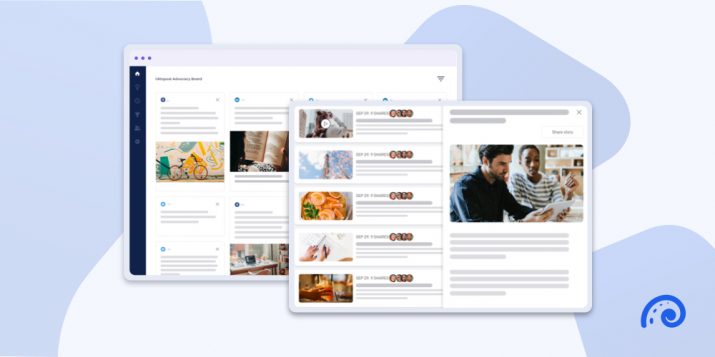
Building a Lead Nurturing Campaign? Don’t Forget This
It’s one thing to attract potential buyers, but quite another to keep them engaged and interested in your company throughout the buyer journey. Chances are you or your marketing team have spent a great deal of time and money designing a lead nurturing campaign. That is, building relationships with prospects over time by producing content catered to their needs at every stage of the funnel and maximizing their chances of buying from you.
An effective lead nurturing campaign is rooted in data. The more data you have on lead behavior, the better you understand their needs, top-of-mind interests, and intent, and the more sophisticated you can be at creating a content flow that educates and engages prospects without annoying or alienating them.
Unfortunately, you can’t revolve your entire lead nurturing campaign around how buyers engage with your website and email content. Today’s B2B buyers are spending far more time doing research on social media – an average of 116 minutes on social networks each day. Not to mention, social media is where 55% of buyers search for information and 84% of CEO’s and VP’s make their purchasing decisions.
Social media data is no longer a source that B2B marketing managers can ignore.
Without it, you have major blind spots in your lead nurturing campaign.
Wave Goodbye to Blind Spots, and Hello to Social Engagement
Think of your buyer journey as someone leaving “digital footprints” across multiple channels. As people seek information on your website, they’re also going to your social media profiles, liking your posts, converting from your content, and messaging you directly. Before they even reached your website or subscribed to your email list, they’ve already completed 60% of their journey on social media independently.
These social media footprints – or “social engagement data” – represent a large portion of your lead behavior and are some of the most valuable, accurate, and fresh data points you’ll ever capture.

Social media has been around for years, but now, social engagement data can tell you a great deal about buyers’ content preferences, pain points, topics of interest, and ultimately, how to best target them with relevant content.
The good news is, connecting between these social engagement points and your marketing automation platform can significantly enhance your lead nurturing campaign. Here’s how:
How to Use Social Engagement in Your Lead Nurturing Campaign
The buyer journey has never been more complex and illogical. For this reason, social engagement data is just as important and valuable as your company’s email marketing and website data.
It’s best to view social engagement as a source of raw data, which includes (and is not limited to) the following metrics:
- Shares
- Likes
- Conversions
- Comments
- Mentions
- Impressions
- Clicks
Using social engagement data, you can nurture leads with highly personalized email content according to their social media behavior. Below are two examples of implementing this into your workflow.
1. Nurturing with Social-Interest Emails
The first way is by sending interest-based email around various actions that leads take on social media. For example, you can have multiple versions of the same monthly newsletter – each one pertaining to a different content topic that your leads engaged with on social.
For instance, if a lead clicked on a social post around Topic A, they will automatically receive more relevant content about Topic A. However, if a week later, the same lead converted from a social post about Topic B, they will then receive content about Topic B. In this sense, leads can jump between different nurturing programs based on the topics they engaged with on social media.
In using social engagement data for its own lead nurturing campaign, Socedo found that over the course of a month, social-interest emails generate 2X the click-through rates than typical nurturing emails (meaning, emails that don’t take into account social engagement). Open-rates on these emails were also 50% higher than typical nurture emails.
In using social engagement data for its own lead nurturing campaign, Socedo found that over the course of a month, social-interest emails generate 2X the click-through rates than a typical nurturing emails (meaning, emails that don’t take into account social engagement). Open-rates on these emails were also 50% higher than typical nurture emails.
2. Nurturing with Personalized Sales Outreach
When it comes to lead nurturing, B2B marketers are not the only ones to benefit from social engagement. Alternatively, sales reps can leverage social engagement to personalize their conversations with prospects, at scale.

If a sales rep is unaware of a prospect’s social media activity, they lack valuable information needed to communicate effectively, and ultimately, to close a deal.
Oktopost’s AI-powered social listening tool constantly monitors and analyzes audience interactions (including direct messages, comments, and mentions) across the various networks to surface negative or positive sentiment.
By integrating these social engagement signals with your marketing automation system, you can create an automated workflow, which alerts the sales team, in real-time, of a prospect’s social sentiment. This way, the sales rep can promptly follow-up with the prospect in a more personal and authentic way.
It’s also important to discuss these workflows with your SDRs and sales reps. Ask them: if a lead took specific social media actions, would they be able to have a more meaningful conversation with them? If the answer is “yes”, find out which types of social actions make for a better conversation.
Socedo’s SDR team mentions relevant tweets (that prospects engaged with) inside their emails, including light call-to-actions. In doing this, the SDR’s response-rate doubled, allowing them to schedule more monthly appointments.
Socedo’s SDR team mentions relevant tweets (that prospects engaged with) inside their emails, including light call-to-actions. In doing this, the SDR’s response-rate doubled, allowing them to schedule more monthly appointments.
Whether you choose to send interest-based or sales-personalized emails, taking into consideration a lead’s social engagement ensures that you’re nurturing them with the most relevant content, at the most optimal time. This tactic is bound to spark a stronger buyer-company relationship.
Recommended for further reading
Enrich your Lead Nurturing Campaign!
Most B2B marketers understand that social media provides a rich pool of data to draw from. The only question is how you can capture this engagement data in an accurate and meaningful way and incorporate it into your existing lead nurturing campaign?

Don’t confuse, social engagement data isn’t the silver bullet for learning everything there is to know about your leads. However, when added to your existing lead nurturing campaign, it can make up for a major blind spot, and help you convert significantly more qualified and sales-ready leads for your sales team.
Have any questions about building a lead nurturing campaign with social engagement data? Feel free to request a demo of Oktopost today!


